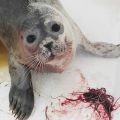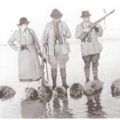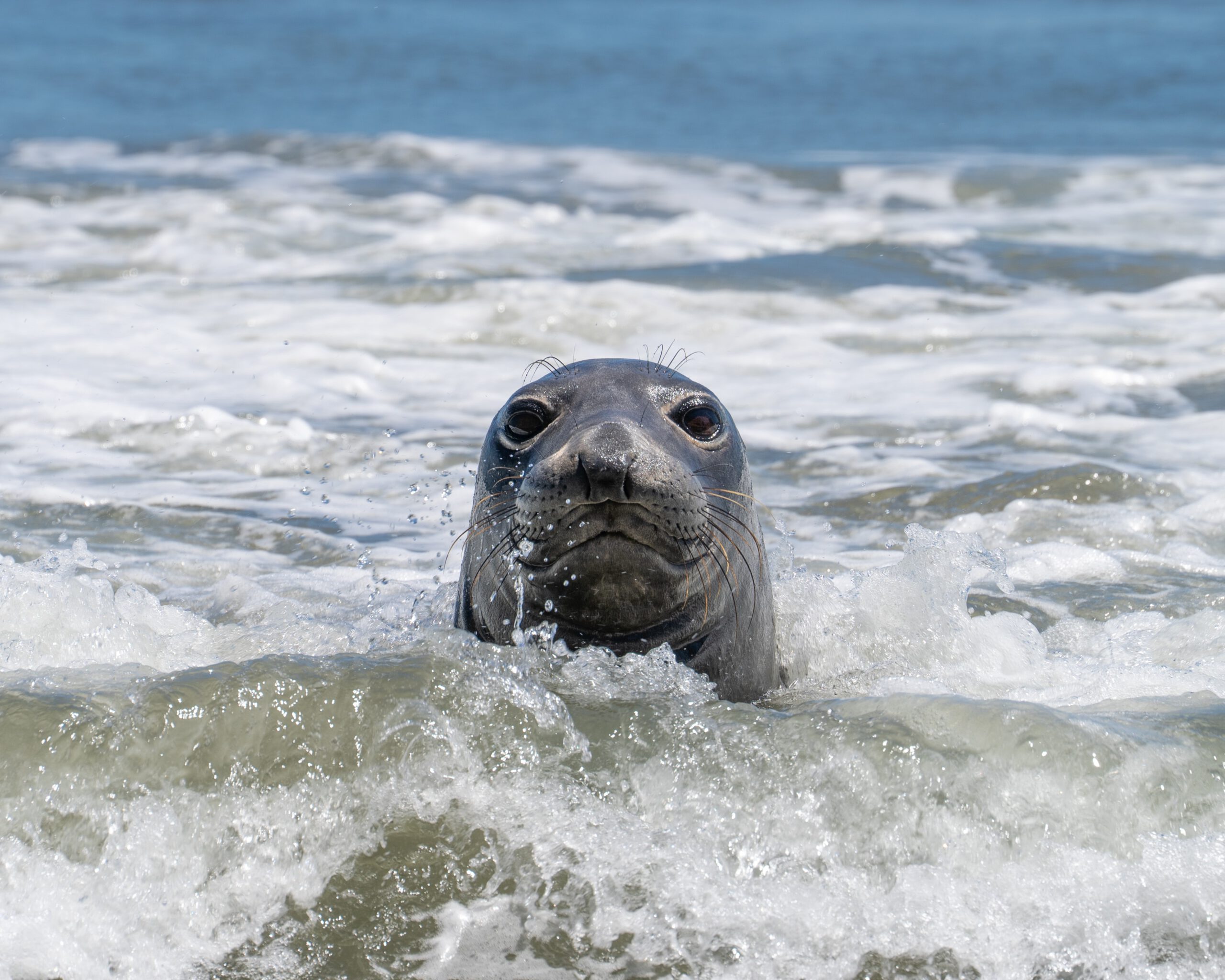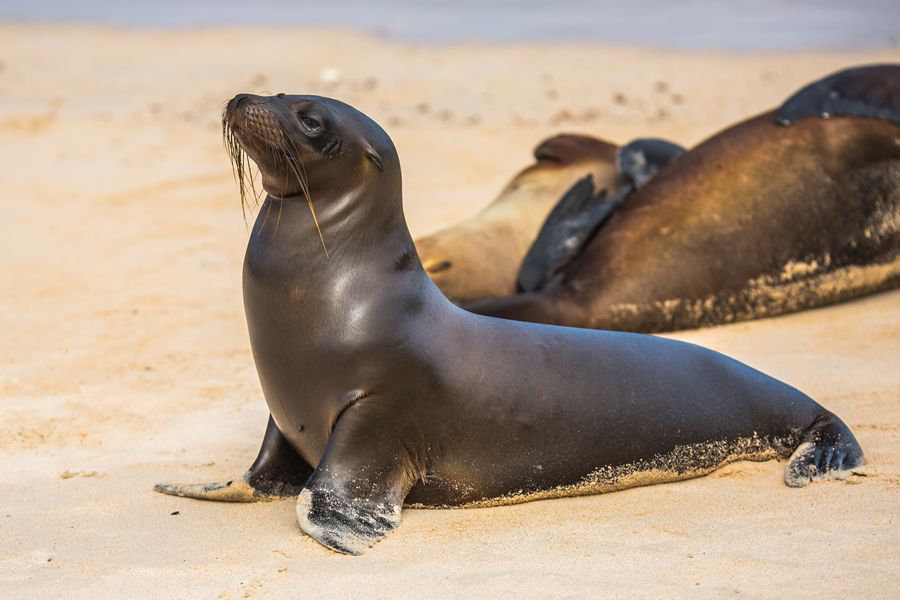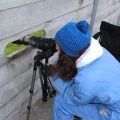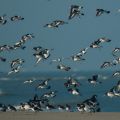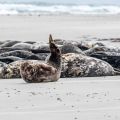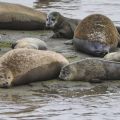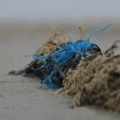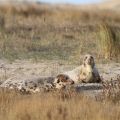Pinnipeds (pinnipedia)
The pinnipeds (Pinnipedia) are a group of marine mammals comprising of three families: the seals (Phocidae), the sea lions (Otariidae) and the walrus (Odobenidae). They are all members of the order Carnivora, the carnivorous mammals.
This order can be divided into two sub-orders: the felines (Feliformia) and the canids (Caniformia). Pinnipeds belong to the latter group: the canids. They share an ancestor with the marten families (Mustelidae). This ancestor will have looked a bit like an otter.
See also
Did you know...
The paws of seals are called flippers?
What do pinnipeds look like?
Pinnipeds all have a long body with large chest and narrow flared abdomen. Their main characteristic is the shape of the legs. This is also where they get their name from. The legs of pinnipeds are short with very long fingers and toes. The space between the fingers and toes are webbed, making their legs look more like fins. We also call their legs flippers.
Because they spend much of their lives in cold seas. Their skin is also covered with a short, dense fur. This keeps pinnipeds warm. They can put that to good use in cold water or in the icy areas where they sometimes live.
How do pinnipeds move?
Some marine mammals, such as whales, only live in the water. Pinnipeds are different. They live (largely) partly in the water and partly on land. They all have their own way of moving around, both on land and in the water.
Mostly pinnipeds use the land to rest, shed hair, mate, and raise pups. But their life mainly takes place in the water. Most pinnipeds can spend days in the water to hunt and eat. They can even sleep in the water. Some species also mate in the water.
Because they live this way, we call pinnipeds semi-aquatic. Literally it means half in the water.
Under water
All pinnipeds are most agile underwater. Their build allows them to move much faster there. This does come in handy, as their food is all found in the water!
Seals (Phocidae) keep their back flippers against each other while swimming . They then move their abdomen back and forth to push through the water. When you see a seal swimming, they make a bit of the same movement as a fish. Their front flippers are mainly for steering, not for speed.
Walruses under water
Walruses (Odobenidae) swim in the same way as seals, so by moving their back flippers back and forth. They use their front flippers to steer and paddle.
Sea lions under water
Sea lions (Otariidae) have a different way to swim. They have much longer and stronger front flippers than seals, and use them to gain speed. They move the front flippers up and down, pushing themselves through the water. It resembles the way a bird flies through the sky. Sea lions are a lot more agile than seals and walruses, but can swim for less time.
On land
Because their bodies are well adapted for life in the water, pinnipeds on land are much less agile. But there is a difference between the families in how easily they move on land.
Seals on land
Seals cannot fold their rear flippers forward. Due to the construction of their bodies, they always point backwards. Instead of walking, they move more like a caterpillar. They lift their backs up, making their rears stick out a bit. Then they push themselves off with the back of their body. By doing this often and in quick succession, it looks like the seal is bouncing a bit.
Walruses on land
The walrus (Odobenidae) can fold the back flippers forward. But their bodies are too big and heavy to lift off the ground. Instead of actually walking, they slide across the land on their stomachs by leaning on their flippers.
Sea lions on land
Sea lions (Otariidae) are the most mobile of the three families on land. Their front and rear flippers lift their entire body off the ground (folding the rear flippers forward under their bodies). For example, sea lions can walk on all fours, and even gallop!
How do pinnipeds live?
Diet
The sea is where pinnipeds get their food from. They hunt all kinds of animals there. Most pinnipeds are opportunistic hunters.. This means they will eat pretty much anything they can get their hands on. Generally, they go for fish, squid, shellfish that they can swallow whole. But sometimes there will be a few that will also go after larger animals such as seabirds and small marine mammals.
In groups or alone?
Most pinnipeds are very social. Outside the mating season, walruses and sea lions often lie together in huge groups on land. Large groups of the same species are called colonies. Sea lions also sometimes hunt in smaller groups. They then work together to herd schools of fish together.
Walruses mainly eat shellfish that live in the seabed. They will stick together in groups while feeding, but do not need each other to hunt.
Seals vary by species whether they live in groups or alone, but most seal species hunt alone.
Mating season
Pinnipeds gather in large numbers on land or ice during the mating season to mate. They usually do this with several partners. Pinnipeds are therefore polygamous. In sea lions, walruses and some seal species, a male will have a group of several females around him. Such a group is called a harem. The male defends his harem against other males and then has the right to mate with all those females.
Pups
Pinnipeds have one pup at a time. Twins are extremely rare. If they did, twins would in most cases not survive. How pinnipeds give birth and care for their pups varies by family and by species, but it is always the females who raise the pups. Males have nothing to do with this.
Sea lions and seals get a pup almost every year. Walruses care for their pups much longer. They get one pup every 4-5 years.
